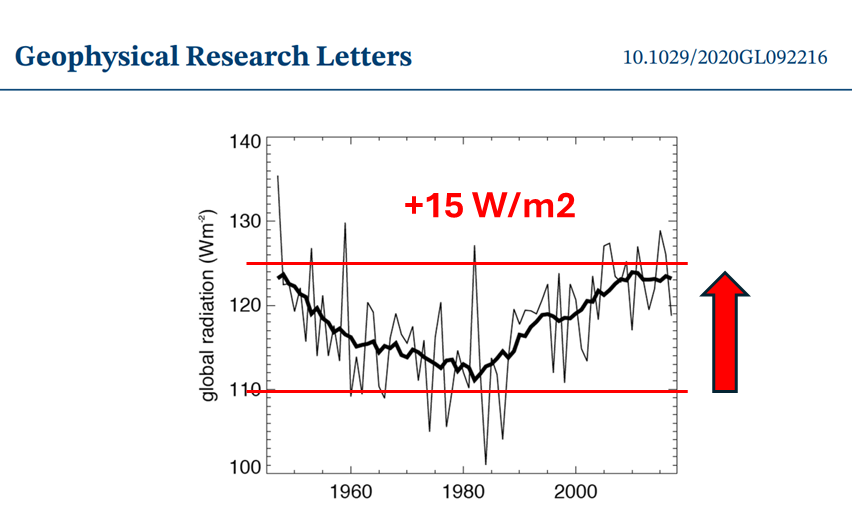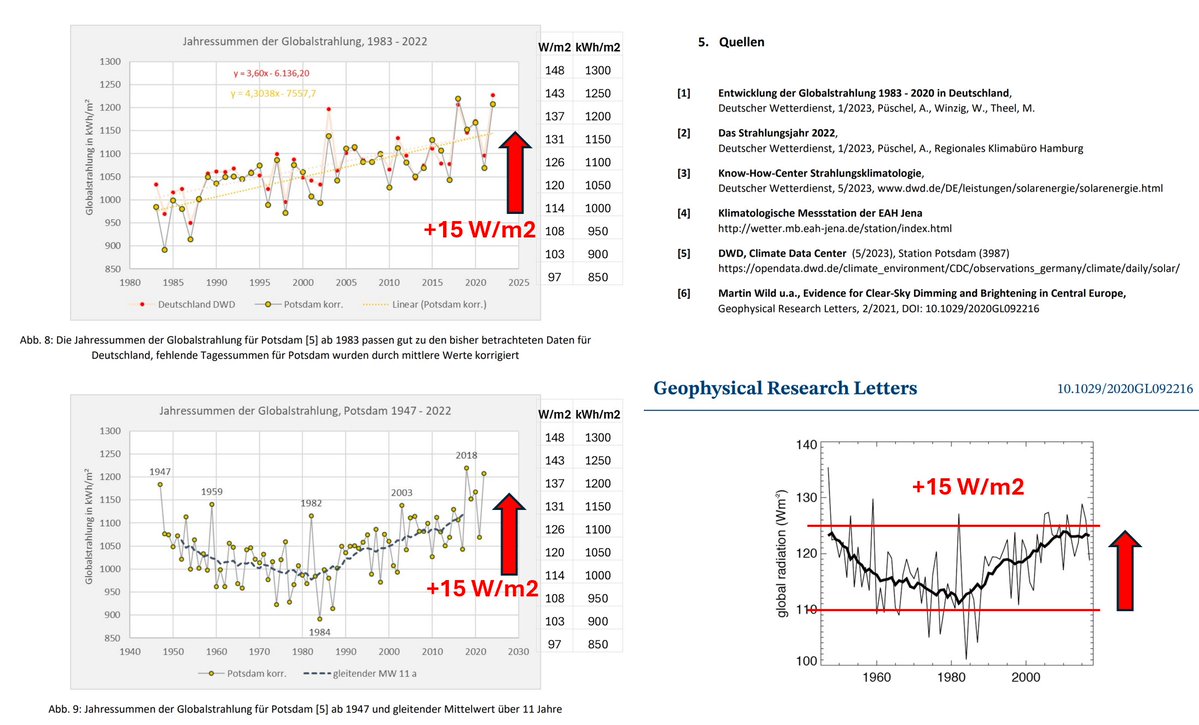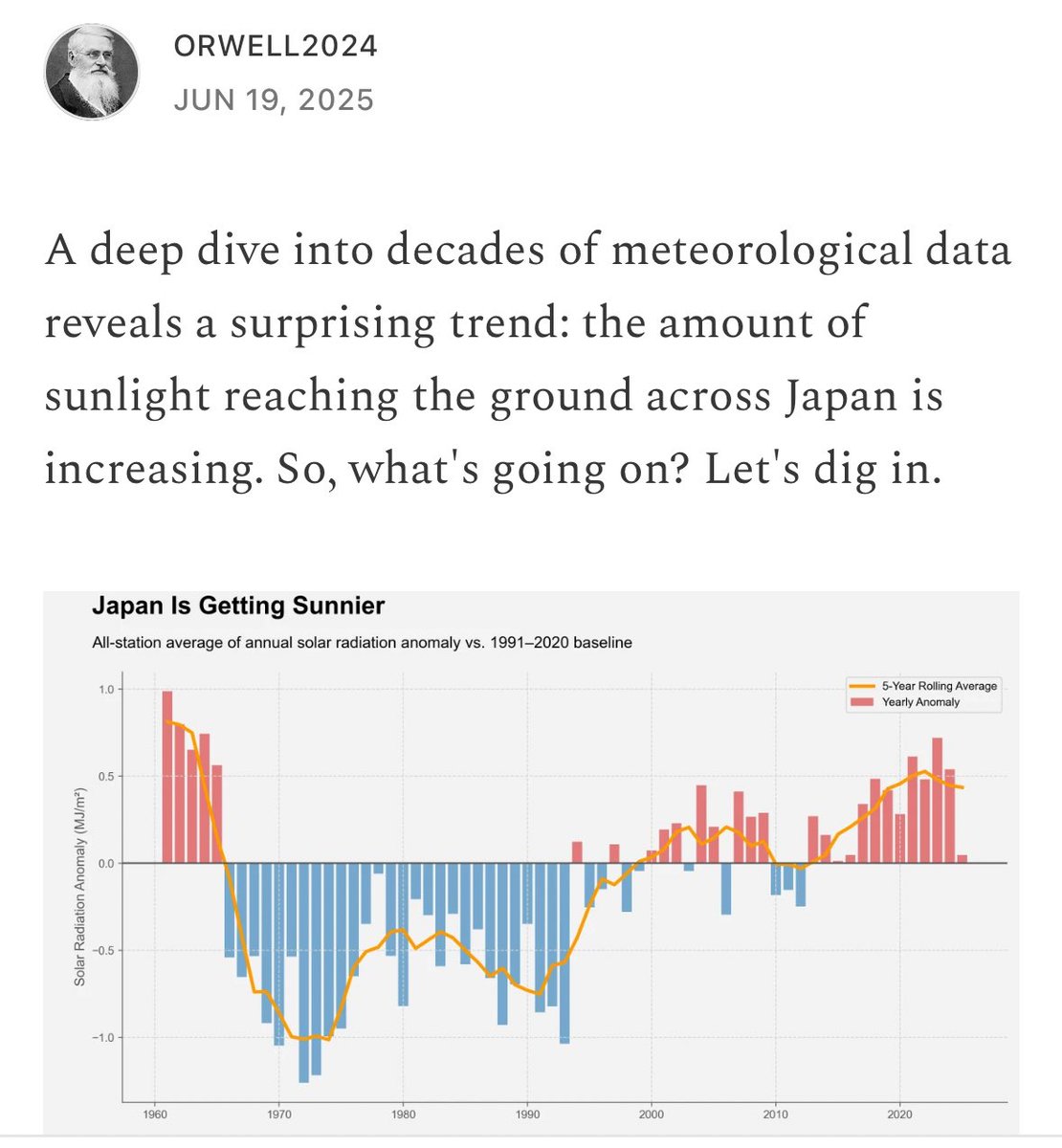
If it disagrees with the expert, it’s wrong. In that simple statement is the key to consensus. https://t.co/MYLncQl3Uh
11 subscribers
How to get URL link on X (Twitter) App


https://twitter.com/orwell2022/status/1988567222436991479
 2/ The analysis is already done. DWD and peer-reviewed literature.
2/ The analysis is already done. DWD and peer-reviewed literature.

https://twitter.com/shomburg/status/1952959812301471754

 Japan has one of the best measurement data. The analysis is clear. The brightening amount to almost 20 W. That is a lot. But the main and dominant effect is still urbanization, which makes up to 6°.
Japan has one of the best measurement data. The analysis is clear. The brightening amount to almost 20 W. That is a lot. But the main and dominant effect is still urbanization, which makes up to 6°. https://twitter.com/orwell2022/status/1953034125868183776


https://twitter.com/uvmeter/status/1941832990629285902UAH is not measurement — it’s model-driven inference. Satellites detect radiance, not temperature. The ‘trend’ is built through weighting functions, drift corrections, and stitched instruments. It’s untestable, synthetic, and not suitable for long-term climate baselines.





 2/ We start low tech. Actually nothing more is needed. There is over 6°C urban heat. It's embarrassing to pretend today's 33°C are comparable to 100 years ago. Subtract 6–8°C for UHI and you get... 25–27°C. Welcome back to reality.
2/ We start low tech. Actually nothing more is needed. There is over 6°C urban heat. It's embarrassing to pretend today's 33°C are comparable to 100 years ago. Subtract 6–8°C for UHI and you get... 25–27°C. Welcome back to reality. 

https://twitter.com/FrederikSchenk/status/1936778073967362415
 We can also do from SE raw. And we can also show how rural stations look. Frederik does like them. Climate agenda is measured in downtowns of the capitals?
We can also do from SE raw. And we can also show how rural stations look. Frederik does like them. Climate agenda is measured in downtowns of the capitals? https://twitter.com/orwell2022/status/1726660530415558813


https://twitter.com/TomANelson/status/1938588034766672329
 2/ 🚨 BREAKING 🚨
2/ 🚨 BREAKING 🚨https://x.com/orwell2022/status/1912164141562736673


https://twitter.com/connolly_s/status/1937097231040909320
 2/ Was wir hier sehen: Die Datenreihe ist ein Komposit (sehr beliebt, wenig seroes, in der Klima-„Wissenschaft“).
2/ Was wir hier sehen: Die Datenreihe ist ein Komposit (sehr beliebt, wenig seroes, in der Klima-„Wissenschaft“).https://x.com/FrederikSchenk/status/1936526840593801476


https://twitter.com/metoffice/status/1936558656104911359
 2/ Using TMAX from a low-quality single urban sensor is already peak incompetence.
2/ Using TMAX from a low-quality single urban sensor is already peak incompetence.https://x.com/orwell2022/status/1890385943498023081


https://twitter.com/orwell2022/status/1925211266953445840
 2/ Here it is: Suttsu.
2/ Here it is: Suttsu. 


https://twitter.com/orwell2022/status/1925911616026992813
 Imagine a field looks like it does on the left…alive.
Imagine a field looks like it does on the left…alive. 



https://twitter.com/orwell2022/status/1910415136101159111
 Thanks to this trick, they labeled urban sites as “rural”—then obviously saw no difference.
Thanks to this trick, they labeled urban sites as “rural”—then obviously saw no difference.https://x.com/orwell2022/status/1910415136101159111


 2/ We check ourselves. The ClimDiv curve is even cooling 1.37C compared with the stable USCRN sites.
2/ We check ourselves. The ClimDiv curve is even cooling 1.37C compared with the stable USCRN sites. 

https://twitter.com/AlecStapp/status/1825262631294218694

 2/ Last week of April 2025. Rural Nagano. ~700m elevation. Full bloom.
2/ Last week of April 2025. Rural Nagano. ~700m elevation. Full bloom.




https://twitter.com/TomANelson/status/1910991704540303676
 2/ And here it is—the DOUBLE-adjusted COMPOSITE.
2/ And here it is—the DOUBLE-adjusted COMPOSITE.https://x.com/orwell2022/status/1910705565514244569



https://twitter.com/tomanelson/status/1909980742727405862
 2/ Class 1 is “bare minimum” for climate-grade weather station suitability. One means maybe ok.
2/ Class 1 is “bare minimum” for climate-grade weather station suitability. One means maybe ok. 
https://twitter.com/orwell2022/status/1904904969133634020
 2/ Here is an example of such a pair. STILLWATER. Note that you can see the wind fence around the precipitation gauge on satellite picture — that round structure.
2/ Here is an example of such a pair. STILLWATER. Note that you can see the wind fence around the precipitation gauge on satellite picture — that round structure. 

https://twitter.com/orwell2022/status/1902048174220497232

 3/ His fallacy is blatant bad faith. Measurement validation isn't done by induction. He claims adjustments are valid because USCRN-ClimDiv align from 2008-2024—yet no adjustments were made in that period. Then he asserts past adjustments are proven. Exceptional level of malice.
3/ His fallacy is blatant bad faith. Measurement validation isn't done by induction. He claims adjustments are valid because USCRN-ClimDiv align from 2008-2024—yet no adjustments were made in that period. Then he asserts past adjustments are proven. Exceptional level of malice. 

https://twitter.com/CopernicusECMWF/status/1901960695752630595
 2/ Now we match the 1940-2024 range. Note temp vs. anomaly scale—same curve, just shifted. A trick to amplify range. Few notice. Climate stripes? Perfect for manipulation—e.g. add offset (ECMWF) to make it red “=warm"= behavior science (manipulative).
2/ Now we match the 1940-2024 range. Note temp vs. anomaly scale—same curve, just shifted. A trick to amplify range. Few notice. Climate stripes? Perfect for manipulation—e.g. add offset (ECMWF) to make it red “=warm"= behavior science (manipulative).https://x.com/orwell2022/status/1841106145932427487


https://twitter.com/connolly_s/status/1900841268546334915

https://twitter.com/red_standing/status/1900162169028620723
 2/ To force it to be honest, we’ll deactivate ideological filters by labeling USCRN anomalies into portfolio value (adding 30 to shift upward of zero). This way, it will think it’s analyzing the fund performance from an automated trading product from my bank.
2/ To force it to be honest, we’ll deactivate ideological filters by labeling USCRN anomalies into portfolio value (adding 30 to shift upward of zero). This way, it will think it’s analyzing the fund performance from an automated trading product from my bank.

https://twitter.com/orwell2022/status/1810402372511994323
 We look closer and see that for 10 years, there's no warming—flat. To make the Urban Heat Island (UHI) effect in Vegas clearer, we compare it with Gallup Muni AP🔵, a highly rural spot (BU 2020 <<1%). This highlights urbanization's impact in VEGAS🔴.
We look closer and see that for 10 years, there's no warming—flat. To make the Urban Heat Island (UHI) effect in Vegas clearer, we compare it with Gallup Muni AP🔵, a highly rural spot (BU 2020 <<1%). This highlights urbanization's impact in VEGAS🔴.https://x.com/digregjf/status/1824852963669508548
